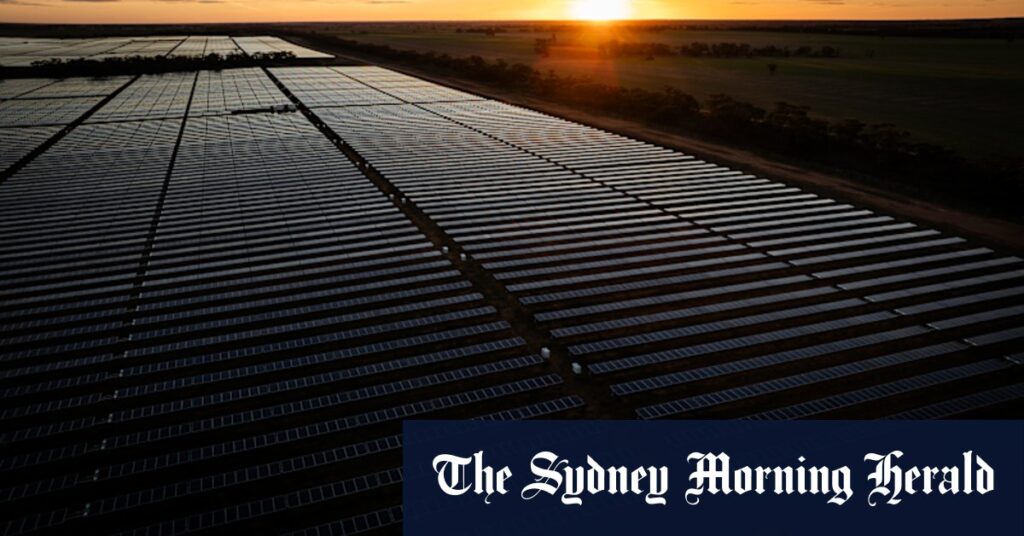
Australia is reportedly on track to meet its 2030 emissions reduction target under the United Nations climate treaty, with national greenhouse emissions decreasing by 1.4 percent in the year leading up to March 2025. However, scientists caution that more substantial cuts are necessary to prevent catastrophic global warming.
The federal government released its quarterly emissions figures, coinciding with a new Resolve Political Monitor survey that indicates strong public support for a more ambitious 2035 target. This comes ahead of the upcoming climate conference in Brazil, where the Coalition’s internal divisions over climate policy are expected to be prominently displayed in parliament this week.
Progress and Challenges in Emissions Reduction
Australia’s transition to renewable energy has been the primary driver behind the reduction in greenhouse emissions. Under the UN Paris Agreement, the nation is committed to a 43 percent reduction in emissions by 2030. The latest Quarterly Update of Australia’s National Greenhouse Gas Inventory, released on Monday, shows a 28 percent reduction achieved so far.
The Department of Climate Change, Energy, the Environment and Water reports that Australia produced emissions equivalent to 440.2 million tonnes of carbon dioxide in the year to March 2025. This figure represents a reduction of 6.5 million tonnes from the previous year, largely attributed to renewable energy generation, industrial decarbonization under the Safeguard Mechanism, and a decline in household gas demand.
Expert Opinions and Public Sentiment
While the government highlights these achievements, climate scientists and environmental advocates stress the urgency of accelerating efforts. Dr. Sarah Johnson, a climate scientist at the University of Sydney, remarked,
“The current trajectory is promising, but it falls short of what is needed to mitigate severe climate impacts. We must aim for deeper cuts and faster transitions.”
The Resolve Political Monitor survey reflects a growing public demand for aggressive climate action, with a significant portion of the population supporting a more ambitious target for 2035. This sentiment is expected to influence Australia’s stance at the upcoming climate conference in Brazil.
Political Dynamics and International Commitments
The political landscape in Australia remains divided on climate policy, with the Coalition experiencing internal discord. Some members advocate for stronger measures, while others remain cautious about the economic implications of rapid transitions. This division is likely to be a focal point in parliamentary debates this week.
Internationally, Australia faces pressure to align with global efforts to combat climate change. The upcoming conference in Brazil presents an opportunity for the nation to showcase its commitment and potentially revise its targets in response to international expectations and domestic public opinion.
Historical Context and Future Outlook
Historically, Australia has faced challenges in balancing economic growth with environmental sustainability. The reliance on fossil fuels has been a significant factor in past emissions levels. However, recent advancements in renewable energy technologies and policy shifts indicate a potential turning point.
Looking ahead, the government’s ability to navigate political challenges and implement effective climate policies will be crucial. The success of Australia’s emissions reduction efforts will not only impact its international standing but also its environmental and economic future.
As the world watches, Australia’s actions in the coming months will be pivotal in shaping its role in the global fight against climate change. The nation stands at a crossroads, with the potential to lead by example or fall short of its commitments.






